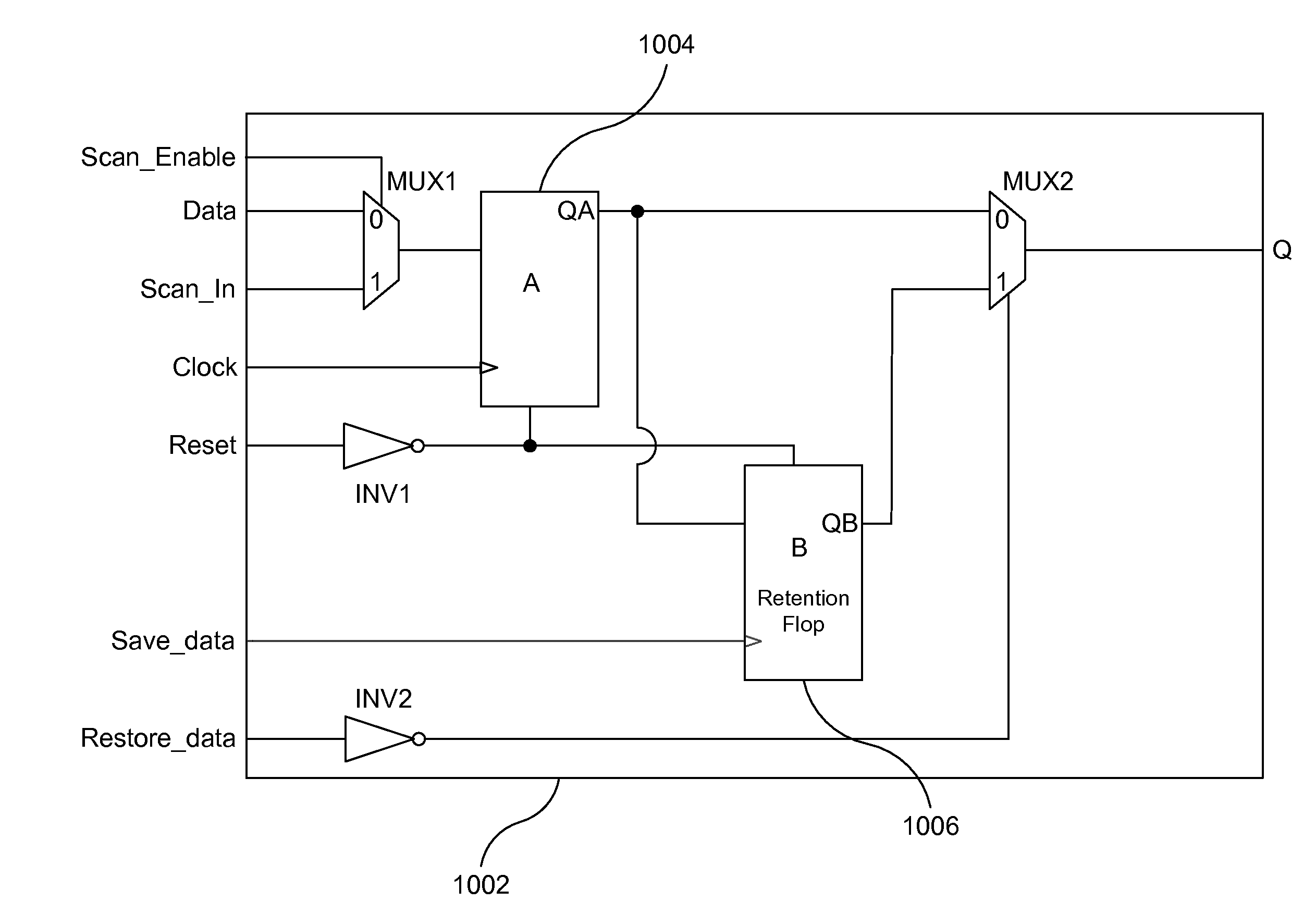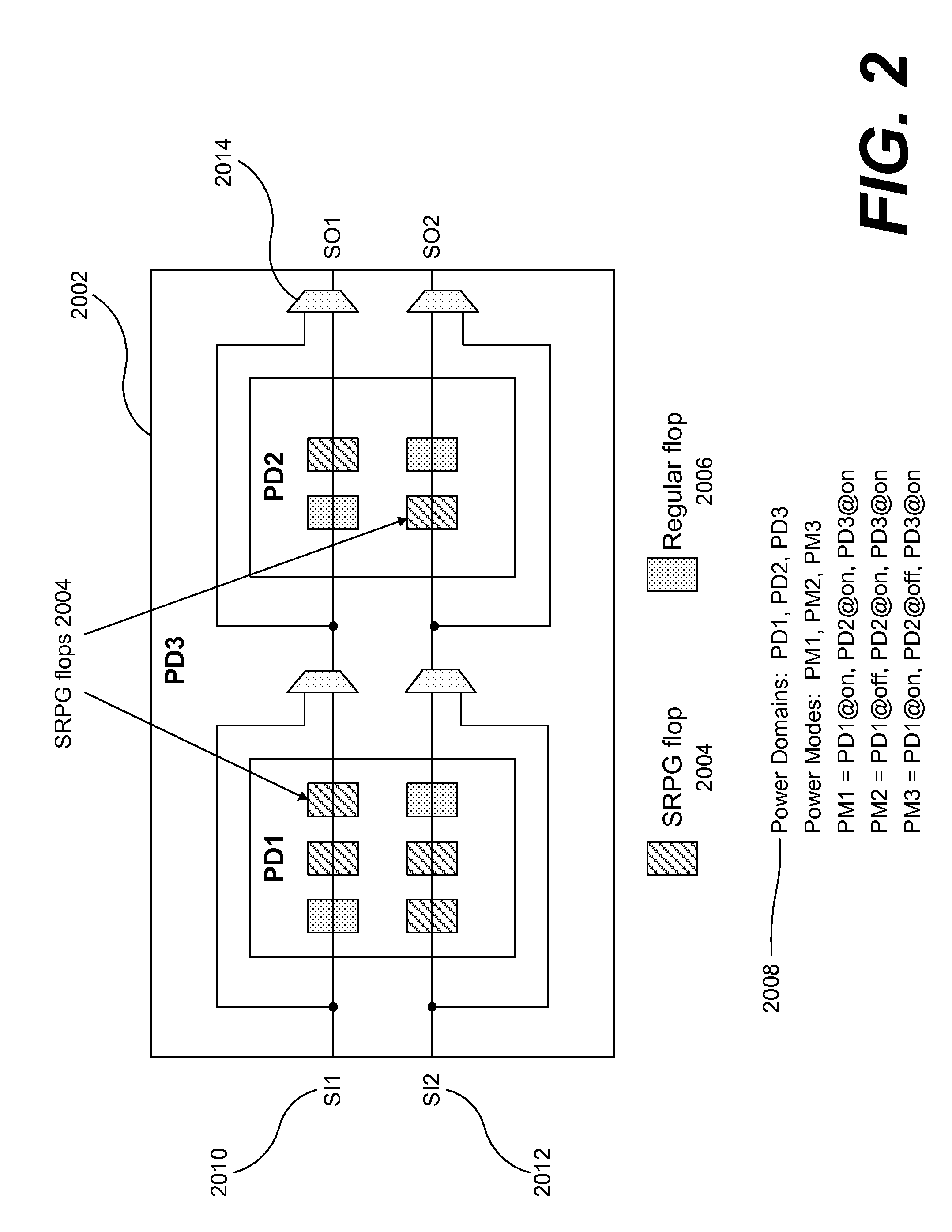Testing state retention logic in low power systems
- Summary
- Abstract
- Description
- Claims
- Application Information
AI Technical Summary
Benefits of technology
Problems solved by technology
Method used
Image
Examples
Embodiment Construction
[0023]FIG. 1 shows an exemplary state retention cell (or SRPG cell) 1002 that includes two flip-flops or “flops” (functional flop A 1004 and retention flop B 1006), two multiplexors (MUX1 and MUX2), and two inverters (INV1 and INV2). Multiplexor MUX1 controls whether Flop A gets data from the functional path (through pin Data) or from the previous flop in the scan chain (through pin Scan_In). When pin Scan_Enable is at logic-0 value, Flop A is on the functional path (Data-Q) and when Scan_Enable is at logic-1 value Flop A is on the scan path (Scan_In-Q). The Restore_data pin would typically be at logic-1 unless the value in Flop B needs to be made visible outside the retention cell.
[0024]Flop B 1006 is the retention flop (or retention element) and is intended to hold state when the main power supply to the retention cell is shut off. Once Flop A 1004 is loaded with an initial state either through the functional pin Data or through the scan pin Scan_In, the Save_data pin is pulsed to...
PUM
 Login to View More
Login to View More Abstract
Description
Claims
Application Information
 Login to View More
Login to View More - R&D
- Intellectual Property
- Life Sciences
- Materials
- Tech Scout
- Unparalleled Data Quality
- Higher Quality Content
- 60% Fewer Hallucinations
Browse by: Latest US Patents, China's latest patents, Technical Efficacy Thesaurus, Application Domain, Technology Topic, Popular Technical Reports.
© 2025 PatSnap. All rights reserved.Legal|Privacy policy|Modern Slavery Act Transparency Statement|Sitemap|About US| Contact US: help@patsnap.com



